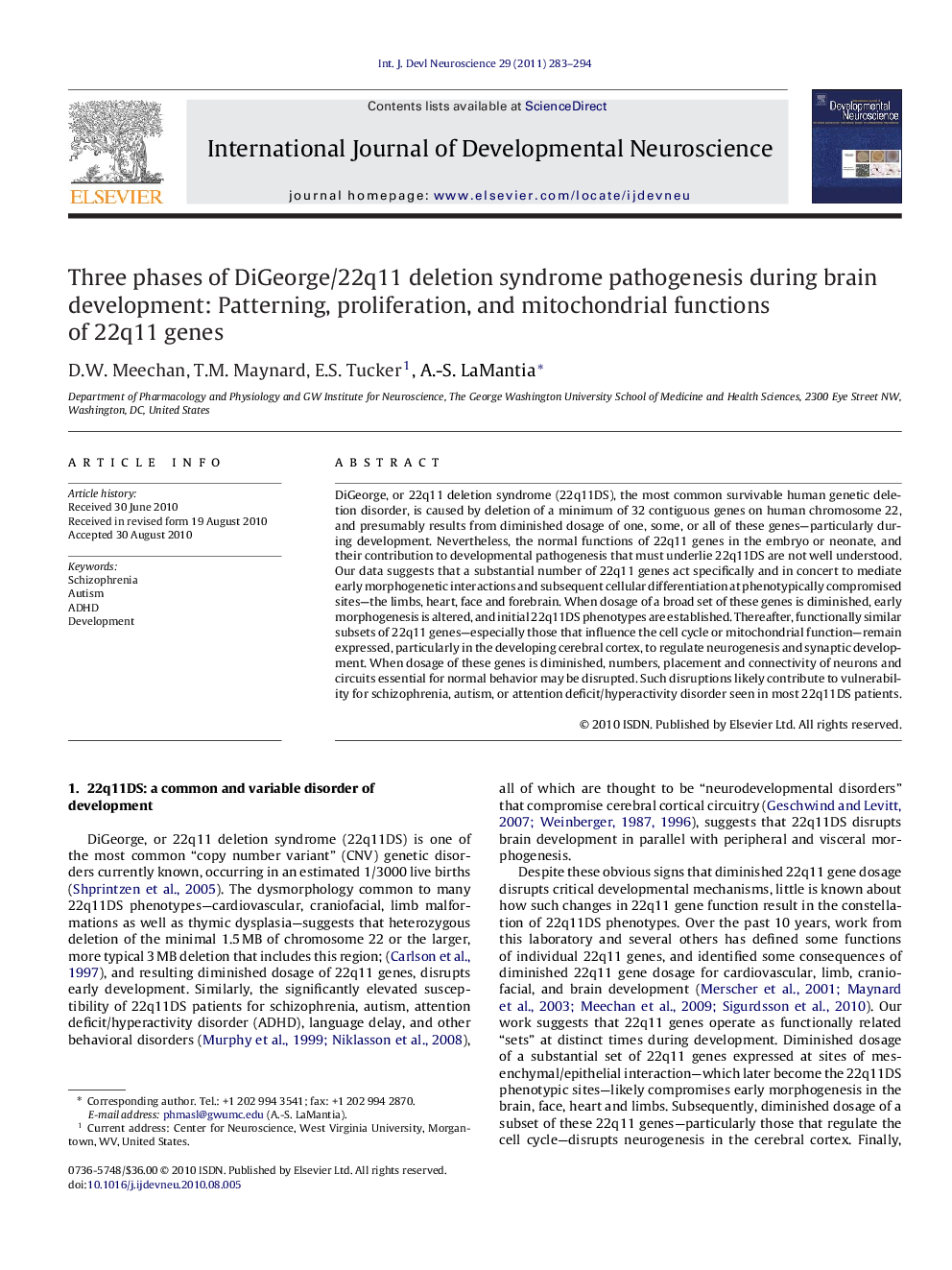| Article ID | Journal | Published Year | Pages | File Type |
|---|---|---|---|---|
| 2786625 | International Journal of Developmental Neuroscience | 2011 | 12 Pages |
DiGeorge, or 22q11 deletion syndrome (22q11DS), the most common survivable human genetic deletion disorder, is caused by deletion of a minimum of 32 contiguous genes on human chromosome 22, and presumably results from diminished dosage of one, some, or all of these genes—particularly during development. Nevertheless, the normal functions of 22q11 genes in the embryo or neonate, and their contribution to developmental pathogenesis that must underlie 22q11DS are not well understood. Our data suggests that a substantial number of 22q11 genes act specifically and in concert to mediate early morphogenetic interactions and subsequent cellular differentiation at phenotypically compromised sites—the limbs, heart, face and forebrain. When dosage of a broad set of these genes is diminished, early morphogenesis is altered, and initial 22q11DS phenotypes are established. Thereafter, functionally similar subsets of 22q11 genes—especially those that influence the cell cycle or mitochondrial function—remain expressed, particularly in the developing cerebral cortex, to regulate neurogenesis and synaptic development. When dosage of these genes is diminished, numbers, placement and connectivity of neurons and circuits essential for normal behavior may be disrupted. Such disruptions likely contribute to vulnerability for schizophrenia, autism, or attention deficit/hyperactivity disorder seen in most 22q11DS patients.
Research highlights▶ 22q11DS genes are expressed embryonically at mesenychmal/epithelial induction sites. ▶ Embryonic neurogenesis and neuronal migration are altered in a model of 22q11DS. ▶ Altered expression of mitochondrial genes in the brain of a mouse model of 22q11DS.
